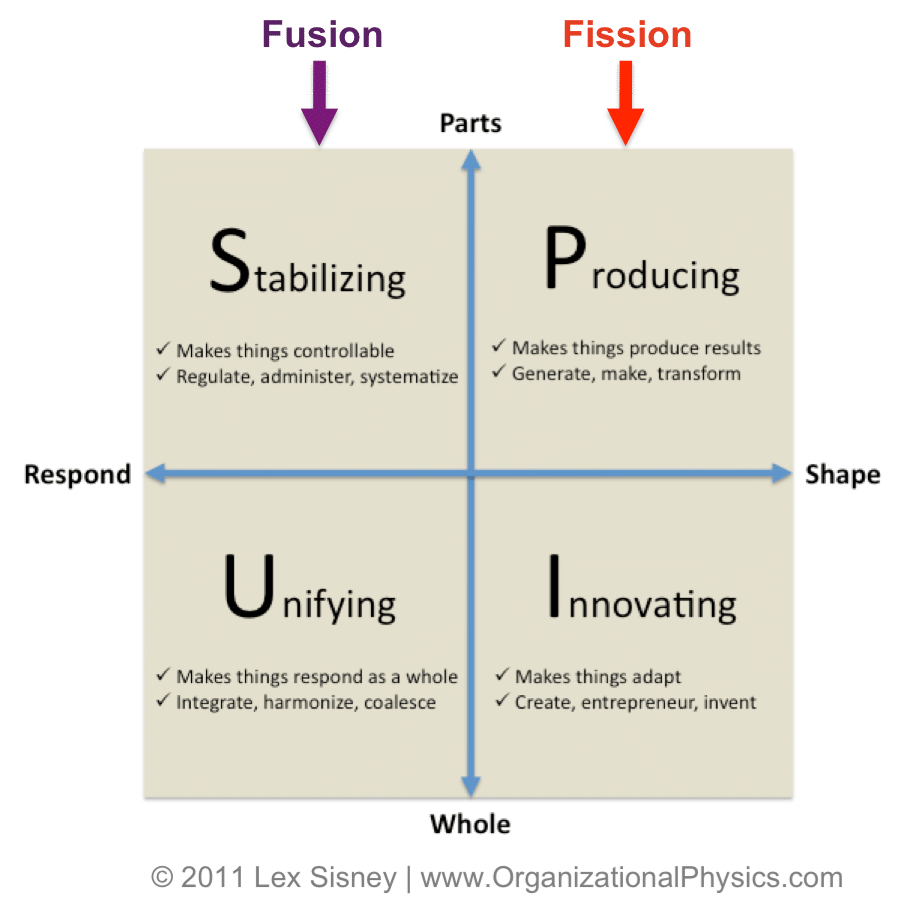
In his thought-provoking book The Genius of the Beast: A Radical Re-Vision of Capitalism (2010), author Howard Bloom introduces the concept that nature explores and consolidates information using fission-fusion strategies. Fission refers to splitting apart. Fusion refers to bringing together. According to Bloom, fission and fusion are relevant to human systems as well. In other words, they apply to both human individuals and organizations. This is a powerful metaphor and it’s also useful for looking at tendencies within your business. Beyond the level of scientific frameworks, these two metaphors can help you to better lead and manage your organization.
Organizational “fission” and “fusion” don’t happen at the same time. Like a heartbeat, they happen in a rhythm. In-out, in-out, in-out. If your business is demonstrating a lot of activity involved in making new discoveries and attempting to drive things forward, we can describe it as being in “fission” mode. If it’s digesting its discoveries and consolidating people around them, we can refer to this as “fusion” mode. In other words, we can map fission and fusion onto our PSIU matrix.
If you look at the PSIU matrix of Organizational Physics below, you’ll see that Producing and Innovating forces are really fission strategies, while Stabilizing and Unifying are fusion strategies. Your organization needs a mix of both but, by law, these forces compete for available energy. Understanding that fact alone will help you to recognize and accept what forces (more fission or more fusion?) are really required for your organization and team at any given time – and why – and then give the system what it needs.
As a manager, you want to create a conscious rhythm for your business and your teams. Team meetings, strategy sessions, and group events are tactics for improving team fusion. On the other hand, giving your team the time, space, and autonomy to execute on the daily work, while tracking progress and giving clear feedback, are tactics for improving fission. What strategy should you deploy when?
If it feels like your team is too fragmented — like a clutch of chickens running around with their heads cut off — it’s a sure sign that there’s a need for more fusion. You’ll need to invest more time and energy on getting everyone on the same page, step away from the daily work, and seek to create team-wide alignment. Or, if it feels like your team is too consolidated — bogged down in bureaucracy, process, and pointless meetings — then break some glass and set them free. Get them out there mixing it up in the world and getting shit done.
While both fission and fusion are necessary for an organization to prosper, a healthy organization will invest about 20% of its time and energy in fusion strategies and 80% in fission strategies. That means that, out of five work days, you’re investing one in fusion – information-sharing, decision-making, and keeping everyone on the same page – and four in fission – allowing everyone on the team to get their heads down and jobs done without unnecessary interruption. If this ratio gets too far out of whack, then you’re going to either burn up with too much fission or implode under too much fusion. To learn how to avoid this, as well as how to achieve and maintain the ideal ratio, you can read more in my new book Organizational Physics – The Science of Growing a Business.

